The Ultimate Guide to Cheese, Wine, and Pickle Pairings: Enhance Flavors with Branston
Discover how different cheeses, wines, and delicious Branston pickles and chutneys can transform your tasting experience. Unlock the secrets to perfect flavour combinations! This post is proudly sponsored by Branston.
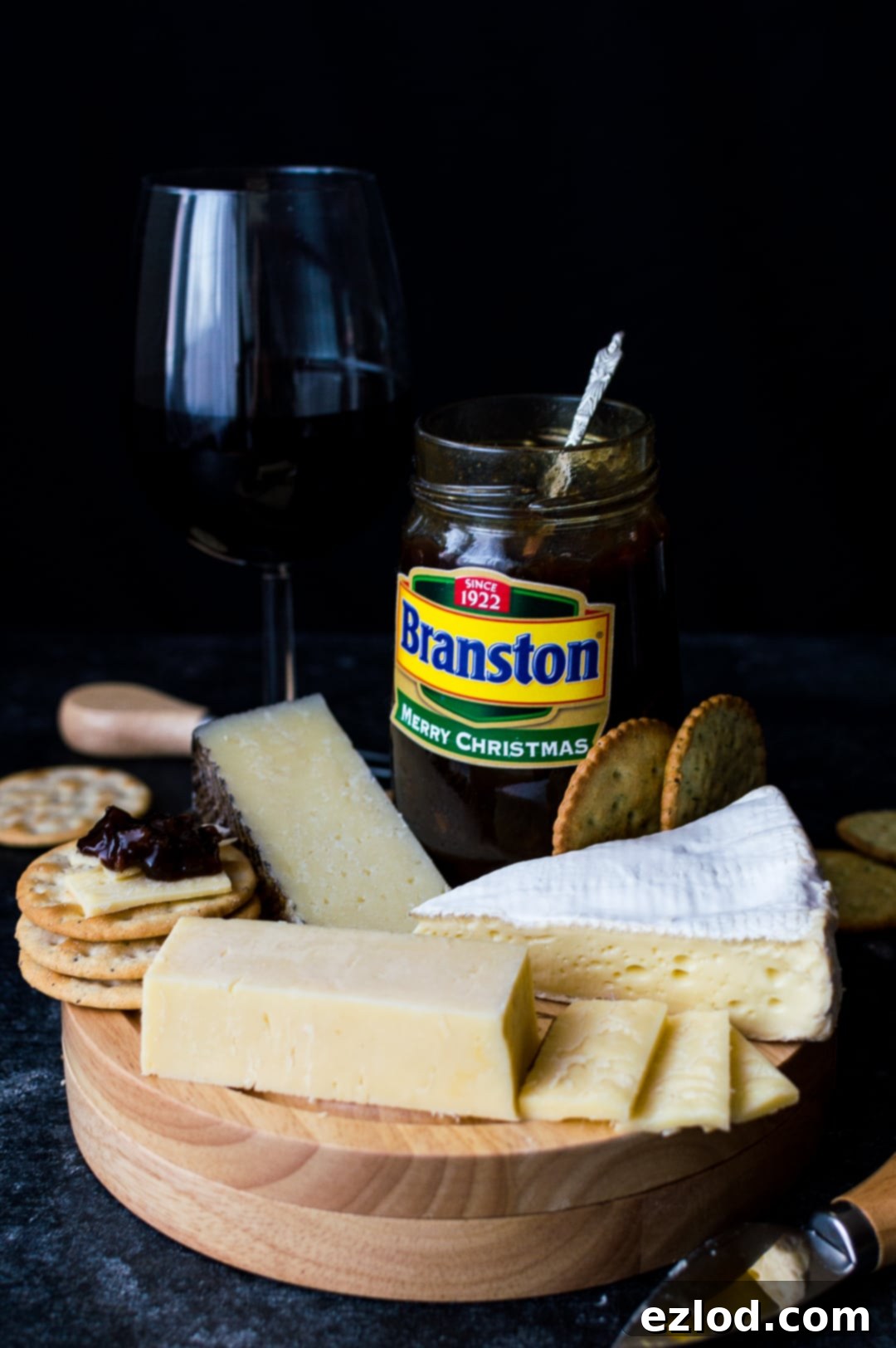
The timeless appeal of cheese and wine is undeniable, a classic combination enjoyed across cultures. Yet, how often do we truly pause to consider the intricate dance of flavours, seeking out the precise wine to complement a specific cheese, and more importantly, what accompaniments can truly elevate this experience? Until recently, I hadn’t fully delved into this culinary science. That all changed when I had the fantastic opportunity to attend an exclusive evening hosted by Branston, dedicated to the art of wine, cheese, and pickle pairing. What unfolded before me was an entirely new realm of flavour enhancement, a revelation that has forever changed how I approach these beloved pairings.
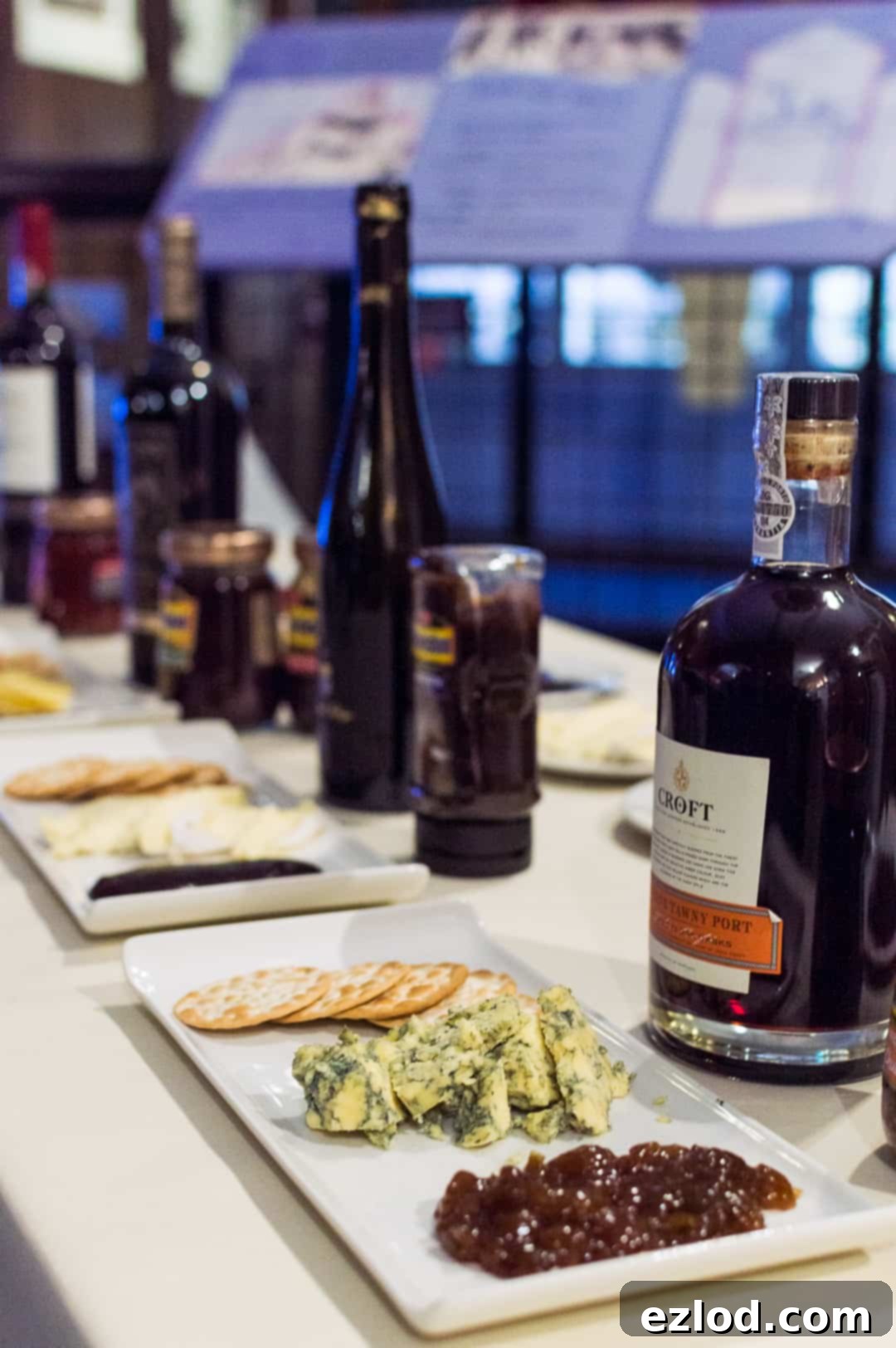
The Science of Taste: Understanding Your Palate
Our evening of discovery began with a rather unconventional tasting exercise: a piece of paper. This wasn’t just any paper, but a special tasting strip known as PROP. This strip contains a chemical called 6-n-propylthiouracil, which elicits vastly different reactions among people. For some, it tastes intensely bitter, for others, mildly so, and a significant portion of the population can’t taste it at all. These groups represent roughly a third of the population each. My own experience was the latter; I tasted absolutely nothing. This lack of sensation, I learned, suggests I have fewer taste buds than average. Conversely, those who find PROP unbearably bitter are often known as ‘supertasters,’ experiencing the world of flavours with a heightened, often overwhelming, intensity. This initial experiment highlighted the profound subjectivity of taste and how our individual palates influence our enjoyment of food and drink.
The Acidity Effect: Lemon and Wine
Following the PROP test, we moved on to another fascinating experiment involving a simple white wine. We took a sip, savouring its original character. Then, we sucked on a slice of fresh lemon, allowing its sharp acidity to coat our mouths. After this, we immediately took another sip of the exact same white wine. The transformation was astonishing: the wine tasted dramatically sweeter, almost like a completely different varietal! This striking demonstration perfectly illustrated the powerful role of acid in food pairing. The acidity in the lemon essentially recalibrated our taste buds, making the subsequent wine seem sweeter by comparison. This principle is incredibly important when pairing wine with acidic foods, such as pickles and chutneys with your cheese, as it can significantly enhance the wine’s perceived sweetness and overall appeal, making it taste brighter and more vibrant.
The Tannin Challenge: Grapes and Wine
Next, we explored the impact of tannins. We sampled the wine again, this time after eating a fresh grape. The result was immediate and unpleasant: the wine tasted far more dry and bitter than before. This phenomenon is attributed to the tannins present in grape skins, which can create a drying, astringent sensation in the mouth. Tannins are complex organic compounds found in various plants, including grapes (especially their skins, seeds, and stems), tea, coffee, chocolate, and walnuts. In wine, tannins contribute to structure, complexity, and aging potential. However, when paired incorrectly, they can clash with food. The lesson here was clear: while many might instinctively reach for chocolate and red wine, the high tannin content in chocolate can often make the wine taste harsher and less enjoyable. For chocolate, it’s often better to opt for a sweet red port or a rich dessert wine, whose sweetness can stand up to and balance the chocolate’s bitterness, creating a more harmonious experience.
Exploring Specific Cheese, Wine, and Branston Pairings
With our palates primed and a newfound understanding of taste dynamics, it was time for the main event: a delightful exploration of various cheese, wine, and pickle pairings. Each combination offered unique insights into flavour synergy.
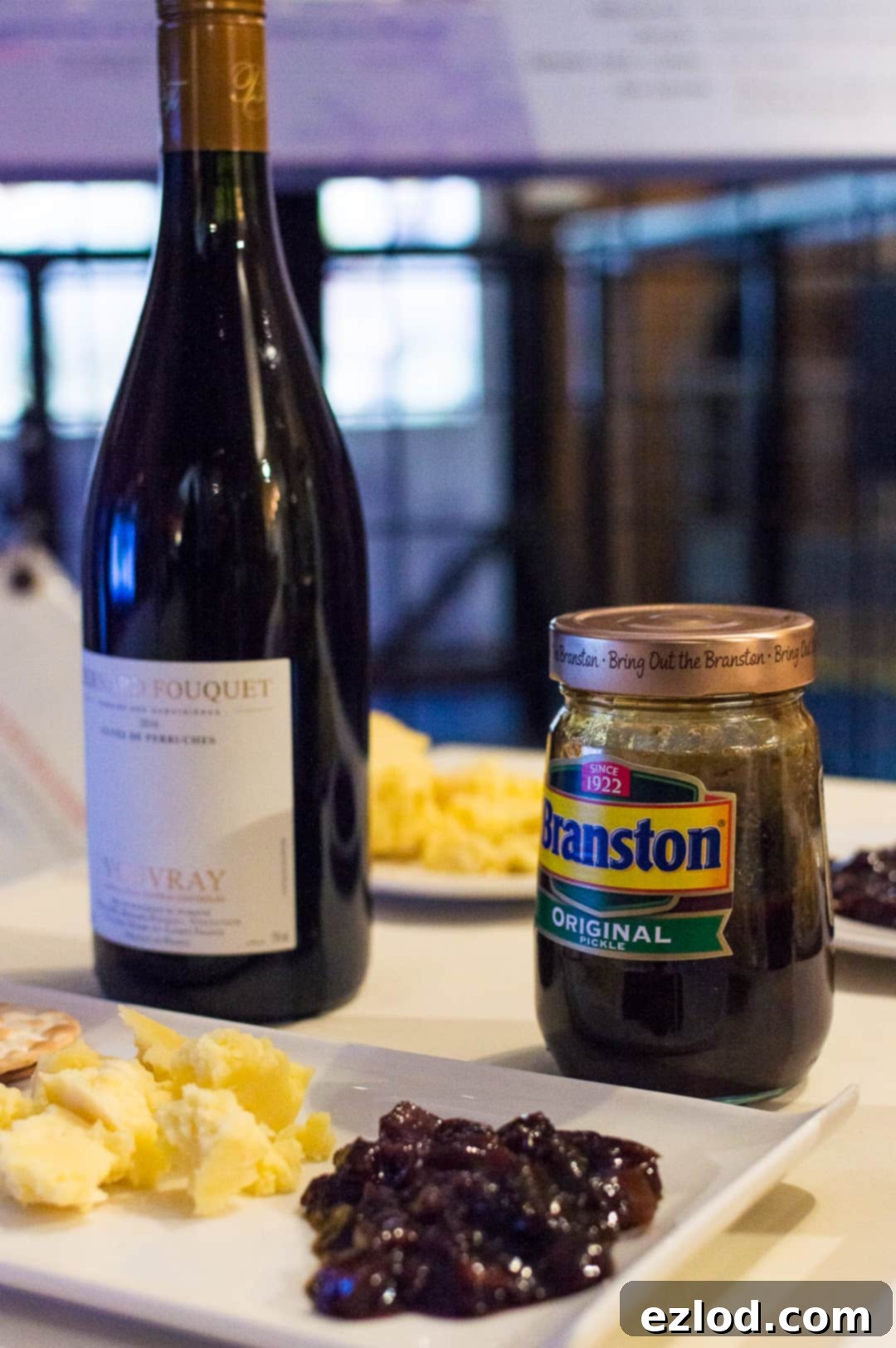
Lancashire Cheese, Branston Original Pickle, and Vouvray
Our first curated pairing featured a mild and creamy Lancashire cheese, the iconic Branston Original pickle, and a glass of Vouvray Domaine des Aubuisieres 2016. It’s common wisdom that red wine is the preferred partner for cheese, so it was intriguing to begin with a white wine. This pairing proved that white wine can indeed work beautifully, particularly when matched with a mild, soft, or creamy cheese like Lancashire. The cheese, with its fresh, slightly crumbly texture and delicate flavour, combined with the sweet and tangy notes of Branston Original, had a fascinating effect on the Vouvray. The wine, already possessing a hint of natural sweetness and bright acidity, tasted even sweeter and more fruit-forward in this context. While I found this enhancement very appealing, some members of the group felt it slightly muted the wine’s subtle complexities. This again underscored the individual nature of taste perception, highlighting how what one person finds balanced, another might find altered.
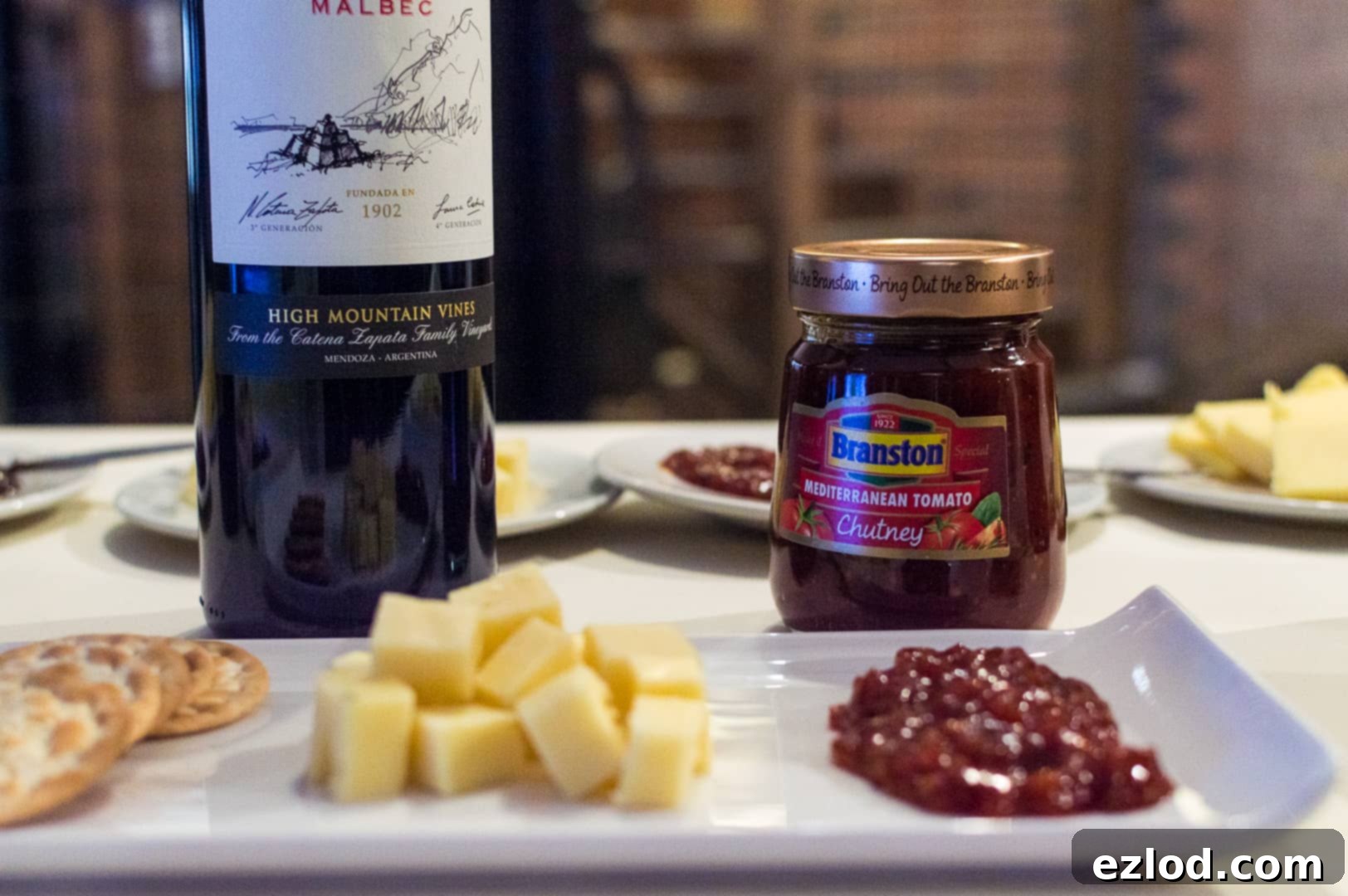
Edam Cheese, Branston Tomato Chutney, and Malbec
Next on our tasting journey was a pairing of Edam cheese with Branston Tomato Chutney and a robust Catena Malbec 2015. The Malbec itself was quite distinctive, revealing a surprising smokiness that hinted at its aging in oak casks. Edam, a semi-hard cheese with a mild, slightly nutty flavour, provided a neutral canvas. However, it was the Branston Tomato Chutney that truly transformed this combination. The chutney, with its rich, sweet, and tangy tomato base, seemed to amplify the smoky characteristics of the Malbec. After a bite of the cheese and chutney, the wine’s smoky notes became even more pronounced, developing into an unexpectedly delightful flavour profile. This combination was a pleasant surprise, showcasing how a well-chosen chutney can draw out hidden dimensions in a wine, adding depth and intrigue to the overall experience. It was a bold and memorable pairing that I thoroughly enjoyed, proving that unexpected flavour profiles can lead to exciting discoveries.
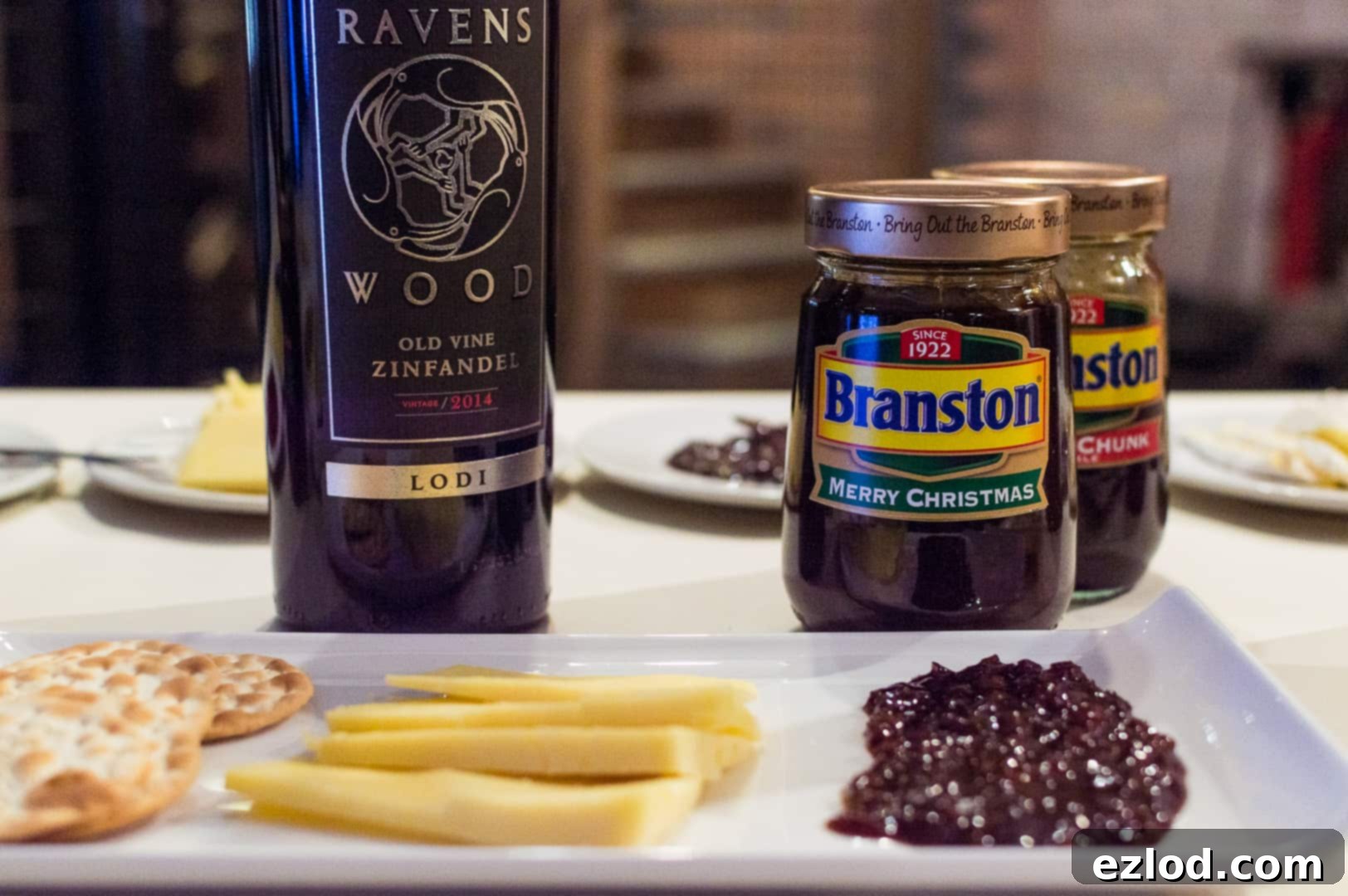
Mature Cheddar, Branston Small Chunk Pickle, and Zinfandel
Our third pairing involved a strong, mature cheddar cheese, Branston’s delightful Small Chunk Pickle, and a Ravenswood Lodi Zinfandel 2014. The Zinfandel was a powerful wine, boasting a rich, spicy character that almost evoked festive, Christmassy notes. Mature cheddar, known for its sharp, tangy, and sometimes crystalline texture, is a cheese that demands an equally robust partner. Here, the Branston Small Chunk Pickle played a crucial role. Its characteristic blend of sweet, sour, and savoury elements, with its satisfyingly crunchy texture, provided a counterbalance to the intense flavours. The pickle’s acidity and sweetness worked to soften the sharper edges of the cheddar and, remarkably, helped to temper the potent, spicy notes of the Zinfandel. This created a harmonious balance, making the strong wine more approachable and the entire combination incredibly moreish. This was a pairing that truly hit the mark, demonstrating how a well-chosen pickle can mellow and integrate bold flavours.
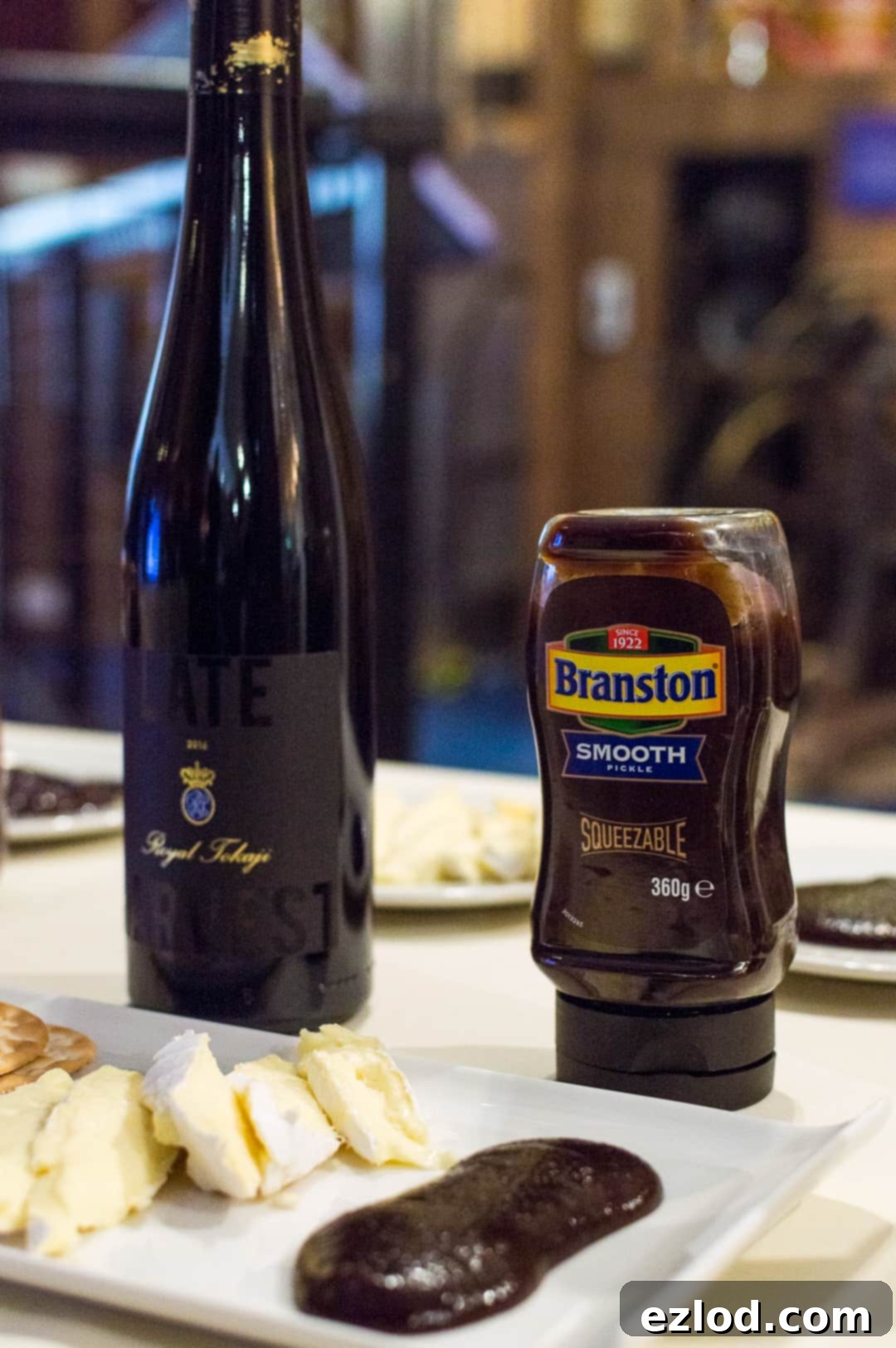
Brie Cheese, Branston Smooth Squeezy Pickle, and Dessert Wine
As the evening progressed, it was time to indulge in a dessert-inspired pairing: creamy Brie cheese, Branston Smooth Squeezy Pickle, and a luscious Royal Tokaji Late Harvest 2015 dessert wine. Given my admitted sweet tooth, this combination was an absolute delight. The Brie, with its buttery texture and earthy, mushroomy notes, contrasted beautifully with the Branston Smooth Squeezy Pickle, which offers a milder, sweeter, and tangier profile than its chunkier counterparts. The dessert wine, already a symphony of honeyed sweetness and rich fruit, found a fascinating partner in this duo. The creamy Brie and the tangy pickle subtly reduced the wine’s intense sweetness, paradoxically making it even more refreshing and eminently drinkable. For me, this blend of sweet, salty, and creamy textures and flavours was utterly addictive—a perfect marriage of indulgence and balance. It’s a reminder that even sweet wines can benefit from contrasting elements to achieve a more complex and enjoyable profile.
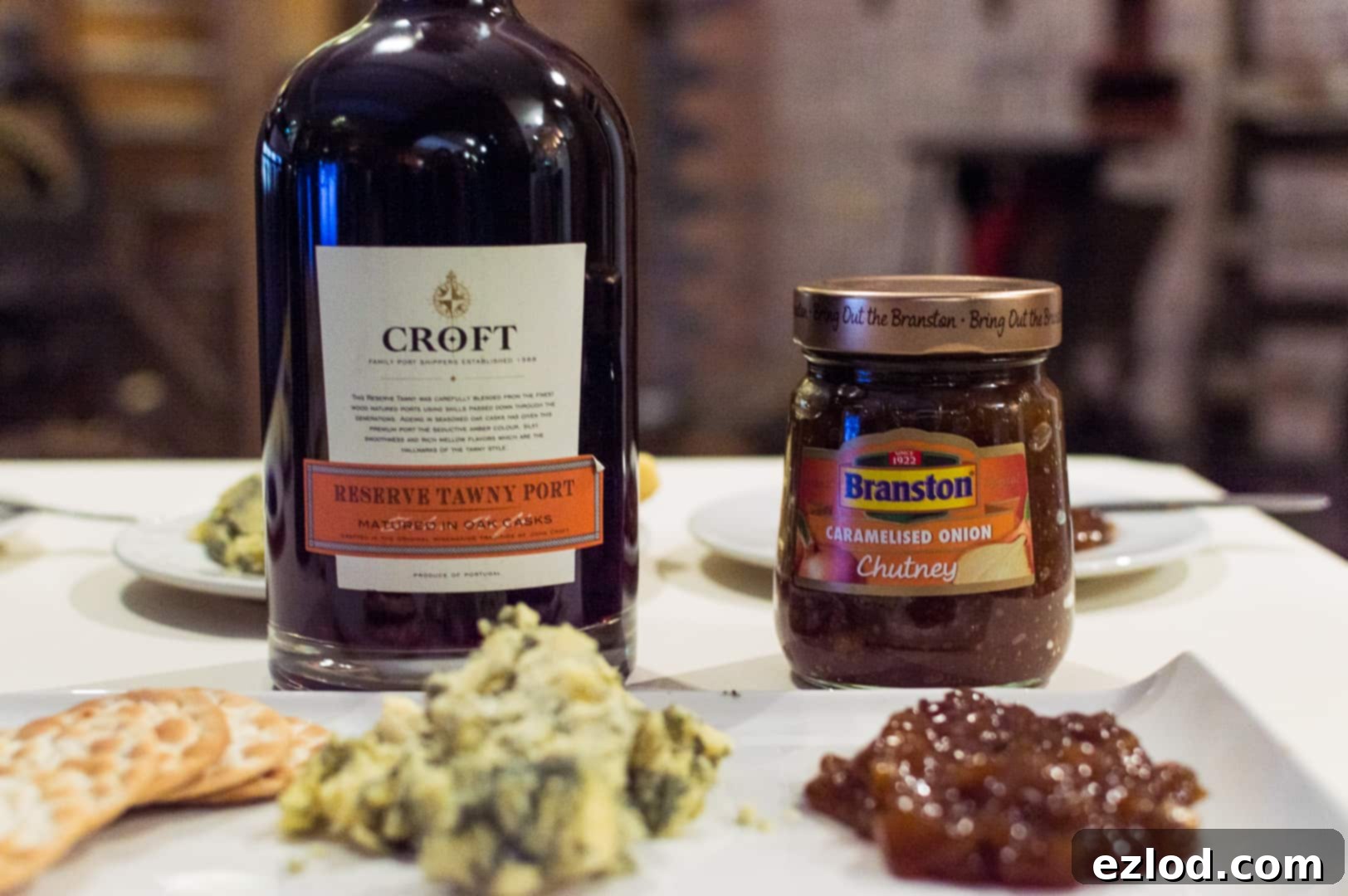
Stilton Cheese, Branston Caramelised Onion Chutney, and Tawny Port
Our final, and perhaps most traditional, pairing was the classic combination of Stilton cheese with Branston Caramelised Onion Chutney and a rich Croft Reserve Tawny Port. While I confess that Stilton isn’t typically my favourite cheese due to its strong blue mould flavour, I am a great admirer of both caramelised onion chutney and port. This particular pairing almost converted me. The intensely pungent and salty Stilton found a perfect foil in the sweet, savoury, and deeply aromatic Branston Caramelised Onion Chutney. The chutney’s sweetness and slight acidity cut through the richness of the cheese, while the smooth, nutty, and dried fruit notes of the Tawny Port wrapped around both, creating a truly luxurious and complex experience. This is an incredibly rich and satisfying combination, often served as an alternative to a traditional dessert, and it exemplifies how powerful, contrasting flavours can come together to create something truly exceptional. It was a sophisticated and deeply flavourful conclusion to our tasting journey.
My Personal Highlights and General Pairing Principles
Of all the wonderful combinations we sampled, my personal highlight was the Edam with Branston Tomato Chutney and Malbec. The tomato chutney was surprisingly delicious, and its unique flavour profile harmonised beautifully with the mild cheese and the unexpectedly smoky Malbec. However, my absolute favourite had to be the Brie with Branston Smooth Squeezy Chutney and dessert wine. The sweet, salty, and creamy dynamic of this trio was, for me, truly addictive and unforgettable. Interestingly, this particular pairing wasn’t universally loved by the group, with a couple of members not enjoying it at all. This further reinforces the point made earlier about the individuality of taste and how differently people react to various flavour combinations. It’s a testament to the diverse and personal journey of flavour discovery.
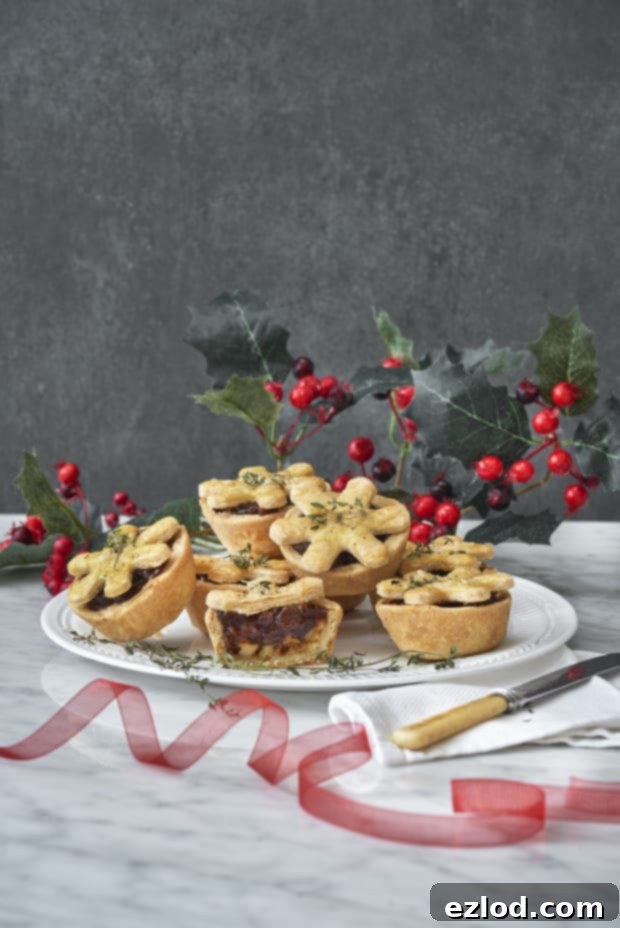
(Picture: Branston)
To conclude our evening of gastronomic exploration, we were treated to a unique savoury twist: a cheese and pickle mince pie. My initial reaction was one of polite skepticism, fearing a conventional mince pie with an odd pickle addition. To my relief and delight, there was no mincemeat in sight! What we actually savoured was a delicious, savoury pie featuring a harmonious blend of cheese, potato, and pickle – a truly ingenious creation. This unexpected treat was incredibly tasty and proved to be a fitting end to a night of surprising flavours. The recipe for these wonderful savoury pies was crafted by none other than one of my baking heroes, Lily Vanilli. For those eager to recreate this culinary delight, you can find the recipe and try it for yourself here. It’s a perfect example of how traditional ingredients can be reimagined in exciting new ways.
Putting Principles into Practice: Your Next Cheese Board
This evening was not only fun and engaging but also incredibly informative. It has fundamentally changed the way I think about building a cheese board and selecting wines, especially heading into the festive season. I now have a much deeper appreciation for the interplay of flavours and textures. The key takeaway for me was the undeniable impact of adding pickles and chutneys. They are not mere afterthoughts but crucial elements that can genuinely enhance and transform the flavour of both the cheese and the wine. I will certainly be stocking up on a variety of Branston products to experiment further! I sincerely hope that the insights shared in this post inspire you to explore your own cheese, wine, and pickle pairings, encouraging you to step beyond traditional combinations and discover your own perfect flavour synergies. Remember, the world of taste is personal, and experimentation is the most delicious path to discovery.
All of the exquisite wines mentioned throughout this post, which provided such wonderful tasting experiences, are readily available for purchase at Majestic Wine.
This comprehensive guide to flavour pairing was made possible through the generous sponsorship of Branston. My sincere thanks for supporting brands that enable me to continue pursuing my passion – delighting in food, exploring new tastes, and yes, sometimes making a delightful mess in my kitchen.